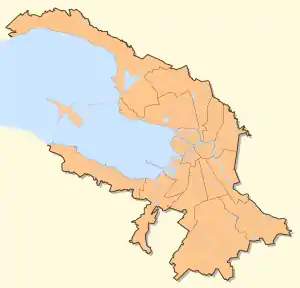Kolpino
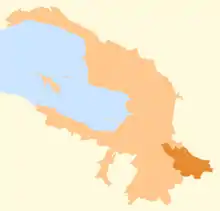
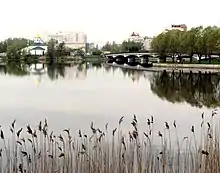
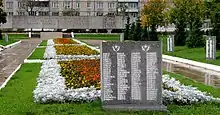
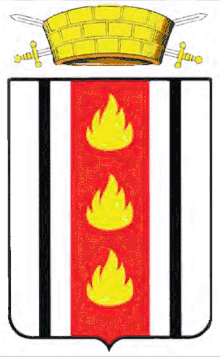
.png.webp)
.png.webp)
Kolpino (Russian: Ко́лпино; Finnish: Kolpina, Kolppina) is a municipal city in Kolpinsky District of the federal city of St. Petersburg, Russia, located on the Izhora River (tributary of the Neva) 26 kilometers (16 mi) southeast of St. Petersburg proper. Population: 138,979 (2010 Census);[1] 136,632 (2002 Census);[2] 141,457 (1989 Census);[3] 81,000 (1972); 8,076 (1897).
History
Kolpino was founded in 1722 and was granted town status in 1912. It was one of the chief ironworks of the crown in Russia. Kolpino was also home to an iron foundry of the Russian Admiralty. A sacred image of St. Nicholas in the Trinity Church is visited by numerous pilgrims on May 22 every year.
With the onset of World War II, Kolpino factory workers formed Izhora Battalion, part of the militia, August 24 – September 4, 1941. The front line was held in the immediate vicinity of the plant, which was subjected to heavy enemy shelling. By 1944, only 327 of Kolpino's 2183 houses remained intact. 140,939 shells and 436 aerial bombs fell in Kolpino's neighborhoods and boulevards. According to incomplete data for the war, shelling and starvation in the Kolpino district killed 4,600 people, not counting the dead on the front. By January 1, 1944 Kolpino had only 2196 inhabitants. After the lifting of the siege, people gradually came back from the evacuation and from the army. On January 1, 1945 population was 7404, the beginning of next year – 8914 people.
During the construction of a new residential building, a mass grave was discovered in Kolpino. 888 soldiers and officers of the Red Army were buried in the mass grave in that cemetery. They fell in September 1941.
Economy and transportation
Many people of Kolpino work at Izhorian Plant. Kolpino District also contains many other plants.
Kolpino railway station has been in operation since 1847.
International relations
References
- Russian Federal State Statistics Service (2011). Всероссийская перепись населения 2010 года. Том 1 [2010 All-Russian Population Census, vol. 1]. Всероссийская перепись населения 2010 года [2010 All-Russia Population Census] (in Russian). Federal State Statistics Service.
- Russian Federal State Statistics Service (21 May 2004). Численность населения России, субъектов Российской Федерации в составе федеральных округов, районов, городских поселений, сельских населённых пунктов – районных центров и сельских населённых пунктов с населением 3 тысячи и более человек [Population of Russia, Its Federal Districts, Federal Subjects, Districts, Urban Localities, Rural Localities—Administrative Centers, and Rural Localities with Population of Over 3,000] (XLS). Всероссийская перепись населения 2002 года [All-Russia Population Census of 2002] (in Russian).
- Всесоюзная перепись населения 1989 г. Численность наличного населения союзных и автономных республик, автономных областей и округов, краёв, областей, районов, городских поселений и сёл-райцентров [All Union Population Census of 1989: Present Population of Union and Autonomous Republics, Autonomous Oblasts and Okrugs, Krais, Oblasts, Districts, Urban Settlements, and Villages Serving as District Administrative Centers]. Всесоюзная перепись населения 1989 года [All-Union Population Census of 1989] (in Russian). Институт демографии Национального исследовательского университета: Высшая школа экономики [Institute of Demography at the National Research University: Higher School of Economics]. 1989 – via Demoscope Weekly.
- "Tarptautinis Bendradarbiavimas" [Druskininkai international cooperation]. Druskininkų savivaldybės administracija (in Lithuanian). 2012-03-22. Archived from the original on 2013-08-03. Retrieved 2013-08-03.
- This article incorporates text from a publication now in the public domain: Chisholm, Hugh, ed. (1911). "Kolpino". Encyclopædia Britannica (11th ed.). Cambridge University Press.
